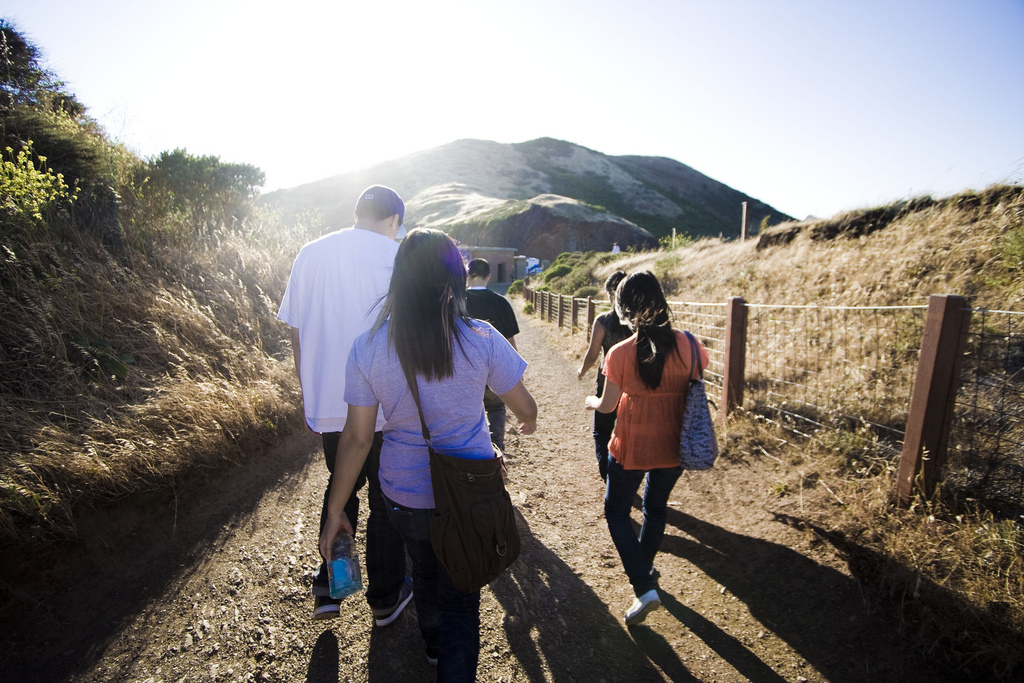Do Japanese visitors love taking a grand tour of the US or sticking it out in one place? Are Chinese tourists all about shopping or skiing? Are beaches as much of a draw as a trek to the Smithsonian for the British?
With a projected 1.8 billion international visitors by 2025 (according to the World Travel & Tourism Council), these are some of the questions that US DMOs are asking themselves. And while it would be so much easier if all international travelers liked all the same things, it is, as you might expect, far more complicated than that.
Where do you begin? With your leading international markets. Here are a few (three of the largest, in fact) that are currently on our radar.
Japan
Japanese tourists love the US. To put that statement in perspective, a whopping 250,901 Japanese visitors traveled to the United States in May 2018 alone, according to JIB Tourism Research & Consulting Co. And the vast majority was here for leisure—70% to be exact, says Trade.gov. Ninety percent visited just one state, which tells us that when the Japanese travel, they want to immerse themselves fully in the unique culture of their destination, therefore booking longer stays and taking in the “story” of the city or state they’ve chosen to visit.
They’re also willing to spend for that experience. Travel and tourism receipts totaled $16.6 billion in 2016, fourth after China, Mexico, and Canada, Export.gov reports. The Japanese are sophisticated travelers, and their hotel experience is particularly important, trending towards higher-end, luxury accommodations.
Here are a few more things worth knowing:
- The majority of Japanese tourists (64%) travels solo, according to travel data co-op ADARA. Couples come in at 24%, and families at 12%.
- Key travel times among Japanese tourists include Golden Week (the end of April/early May), Obon (around August 15), and the end of the year through the week of the New Year.
- The senior travel market is prime. Approximately one-in-four people in Japan are aged over 65, a demographic strongly influenced by American pop culture in a very positive way. “These individuals have time, money, and energy to spend on leisure travel, and are the best match for long-haul destinations such as the United States,” Export.gov explains.
- The majority of Japanese travelers are highly cultivated, finding appeal not only in scenic outdoor destinations, but also in luxury shopping, gourmet cuisine, history, and culture.
- Special Interest Tours (SITs) are big in Japan, and offer a great opportunity to engage repeat travelers. The allure of SITs lies in the ability to travel with a group of like-minded people, sharing specific interests such as baseball, golfing, theater, World Heritage Sites, and even photography, dance, and drawing.
- Students are another key market. Virtually all public and private schools in Japan organize school trips that often venture overseas, with the United States as a number one destination. According to the Japanese Ministry of Education, from April 2015 to March 2016, 1,279 high schools participated in overseas school organized travel.
China
Some would argue that China is every DMO’s dream market. Why? Because while China is the US’ third largest market today (trailing the UK and Japan), the number of Chinese visitors to the United States is growing rapidly. In fact, the US Travel Association predicts that China will be the second largest overseas source market by 2019, rising from 22nd place in 2000.
The first thing you need to know is that old stereotypes are exactly that—old. Chinese travelers are becoming increasingly diverse in their tastes and habits, opting for individual over group travel in order to experience the authentic culture of a place. Despite that diversity, there are some overarching themes.
Adventure—Chinese tourists love it. Which explains why Australia has experienced such a boom in skydiving among Chinese travelers, the majority of which tend to be Millennials. Skiing is another biggie, in anticipation of the 2022 Winter Olympics.
“They … are looking for a holiday where they can experience new cultures with unique experiences,” explains Jonathan Cheung, CEO of Abercrombie & Kent China, in an article for Trekk Blog. A May 2018 J. Walter Thompson Intelligence poll, in fact, found that 30% of Chinese travelers had already taken a thrill-seeking trip, while 45 percent are interested in planning one.
Relaxation is also big. Chinese visitors in particular are branching out from the US’ much-visited iconic sights, seeking less crowded places and more off-the-beaten-track locales—and placing R&R at the top of their priority lists.
These travelers are also spending handsomely. In fact, CLSA predicts that Chinese tourists’ overseas spend will increase from $115 billion in 2017 to $429 billion by 2021. China’s rising middle class is partly behind the boost in outbound tourism. And with McKinsey & Company predicting that more than three-quarters of the population will be considered middle class by 2022, you can see why states across the US are turning their focus to the Chinese tourist market.
Here are a few more facts that may surprise you.
- Chinese tourists are showing more interest in “exploring like a local,” authentic experiences, and travel as a lifestyle, says Trekk.
- Nature continues to be a huge draw for these travelers.
- Shopping-focused travel may be on the decline, partly because the Chinese government, working in tandem with destination countries, is cracking down on the cheap tours once on offer. Also, the costs of housing and education in China are on the rise, which means disposable incomes aren’t what they used to be. Instead, budgets are being channeled into experiences—like unique cultural sights and haute cuisine with a distinctly local flavor.
- While independent travel is on the increase, family travel is also gaining momentum, whether it’s young, affluent expats flying their relatives out for a visit, or older travelers taking their families on overseas vacations.
United Kingdom
The US welcomed 4.6 million UK visitors in 2016, making this tiny but mighty country our #1 Inbound market (a position it has held since 2001). While UK visitors have in fact declined in recent years, the US Travel Association predicts the UK will remain our #1 tourist group, with numbers gradually inching upwards.
Which is why we’re so curious about what the British love so very much about visiting the United States. According to BBC America, it all comes down to classic America and Americana. That means waffles the size of your head rather than the size of a 10 pence piece; enormous, bright, shiny skyscrapers that reach into the cloudless heavens; customer service with a “hi, how’re you doin’?” and a smile; all things pop culture, from peanut butter on everything to cult movie locations; selfies with the Statue of Liberty and at other iconic sights; and, of course, the 24/7 buzz—from bars open till dawn to diners serving up those giant waffles all through the night. Mixed in along the way is a love of cultural experiences, from visiting Abe Lincoln in Washington DC, to spiraling to the top of the Guggenheim in New York.
Here’s a little more insight into British tourists from Expedia Group:
- The British average 2.7 personal trips a year, with sightseeing (53%) and relaxation (52%) topping the priority list.
- Deals, special offers, and finding the lowest price are big factors in the decision-making process. Eighty-eight percent of British travelers, in fact, look for deals before making a destination decision.
- The majority of British tourists stay in hotels (67%) versus alternative accommodations (6%), with the greatest proportion of their spend (31%) being devoted to hotel bookings.
- The most important factor in deciding on a destination is the type of activities they’ll have to do, with cultural experiences ranking especially high. Once-in-a-lifetime experiences are also a factor.
- Reviews on sites like TripAdvisor (88%), “informative content from destination and/or travel brands” aka YOU (81%), and talking to family, friends, and friends of friends who have been there and done that (66%) are the strongest influencers in the decision-making process.
Whether you’re a big city like New York, LA, or Chicago, or a hidden gem like Cleveland, Des Moines, or Minneapolis, you have qualities that will appeal to international tourists. You just have to know what they’re looking for.













